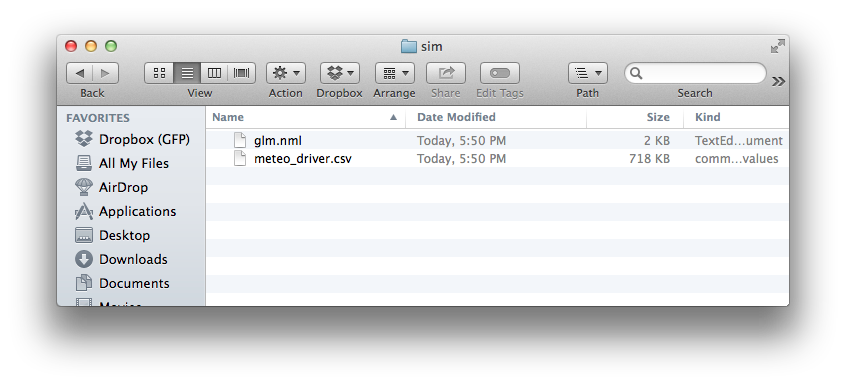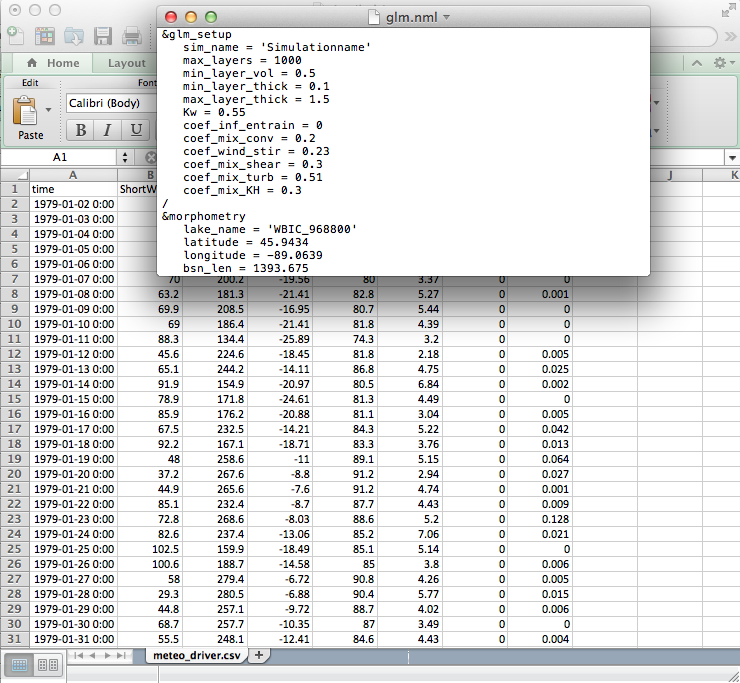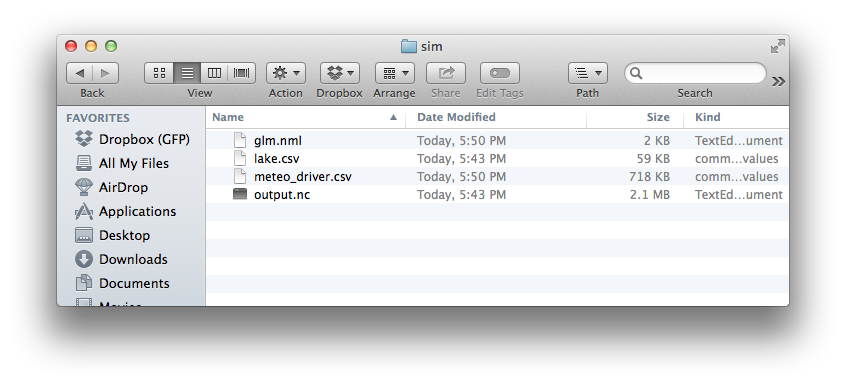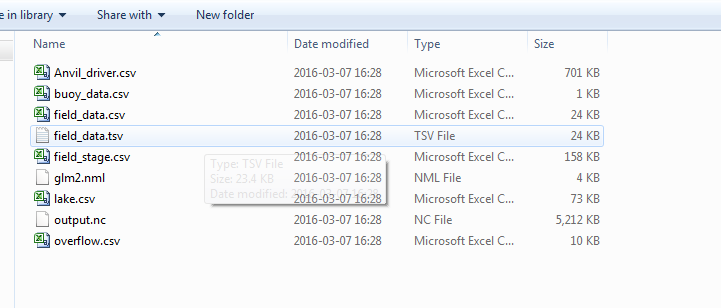Goals for today's workshop
- GLM: basic understanding of lake model
- GLMr: run GLM from R, keep up-to-date version of GLM
- glmtools: reproducible model results handling and visualizations
09 March, 2016
Goals for today's workshop
The GLM model has been developed as an initiative of the Global Lake Ecological Observatory Network (GLEON) and in collaboration with the Aquatic Ecosystem Modelling Network (AEMON) that started in 2010. The model was first introduced in Leipzig at the 2nd Lake Ecosystem Modelling Symposium in 2012, and has since developed rapidly with application to numerous lakes within the GLEON network and beyond.
Source code available at http://github.com/GLEON/GLM-source




GLMr holds the current version of the "General Lake Model",
and can run the model on all platforms (windows, mac, linux) directly from R
glmtools is available on the GRAN repository.
install.packages(c("GLMr", "glmtools"), repos = c("http://owi.usgs.gov/R",
getOption("repos")))
More information can be found here.
GLMr Code in R:
library(GLMr) glm_version() nml_template_path()
Explanation
load the GLMr package in R
get the current version of GLM
find the included example glm.nml
GLMr Code in R:
run_glm(sim_folder)
------------------------------------------------
| General Lake Model (GLM) Version 2.1.8 |
------------------------------------------------
nDays 0 timestep 3600.000000
Maximum lake depth is 9.753600
Wall clock start time : Mon Mar 07 16:28:55 2016
Simulation begins...
Wall clock finish time : Mon Mar 07 16:28:55 2016
Wall clock runtime 0 seconds : 00:00:00 [hh:mm:ss]
------------------------------------------------
Run Complete
Reading config from glm2.nml
No WQ config
No diffuser data, setting default values
simulation complete.
citation("GLMr")
##
## To cite GLM in publications use:
##
## Hipsey, M.R., Bruce, L.C., Hamilton, D.P., 2013.
## GLM General Lake Model. Model Overview and User
## Information. The University of Western Australia
## Technical Manual, Perth, Australia.
##
## A BibTeX entry for LaTeX users is
##
## @Article{,
## author = {Matthew R. Hipsey and Louise C. Bruce and David P. Hamilton},
## title = {GLM General Lake Model. Model Overview and User Information},
## journal = {The University of Western Australia Technical Manual, Perth, Australia},
## year = {2013},
## }
##
## As GLM changes, this package will change with it, and
## the citation may change too. Find GLM version with
## 'glm_version()'.
Explanation
glmtools includes basic functions for calculating physical derivatives and thermal properties of model output, and plotting functionality. glmtools uses GLMr to run GLM
Goals
- understand model inputs
- run model
- visualize results
I am going to use a temporary directory, but you can pick any empty directory you want
library(glmtools)
tmp_run_dir = file.path(tempdir(), "glm_egs") tmp_run_dir
## [1] "/var/folders/y_/1qp06xmj2ws0t8kv54q8wxgh0000gp/T//Rtmp2Q7O7H/glm_egs"
dir.create(tmp_run_dir)
Now run the run_example_sim command and see the files created
run_example_sim(tmp_run_dir, verbose = FALSE)
## [1] "/var/folders/y_/1qp06xmj2ws0t8kv54q8wxgh0000gp/T//Rtmp2Q7O7H/glm_egs"
You should have a directory that looks like this

load glmtools
specify location of glm.nml file
read glm.nml file into R
print (view) the contents of the nml file
library(glmtools) nml_file <- file.path(tmp_run_dir, "glm2.nml") nml <- read_nml(nml_file) nml
## &glm_setup ## sim_name = 'GLMSimulation' ## max_layers = 500 ## min_layer_vol = 0.025 ## min_layer_thick = 0.5 ## max_layer_thick = 1.5 ## Kw = 0.55 ## coef_mix_conv = 0.125 ## coef_wind_stir = 0.23 ## coef_mix_shear = 0.2 ## coef_mix_turb = 0.51 ## coef_mix_KH = 0.3 ## coef_mix_hyp = 0.5 ## / ## &morphometry ## lake_name = 'Anvil' ## latitude = 32 ## longitude = 35 ## bsn_len = 21000 ## bsn_wid = 13000 ## bsn_vals = 15 ## H = 510.5363, 511.23299, 511.92967, 512.62636, 513.32304, 514.01973, 514.71641, 515.4131, 516.10979, 516.80647, 517.50316, 518.19984, 518.89653, 519.59321, 520.2899 ## A = 0, 108964, 217929, 326893, 435858, 544822.5, 653787, 762751, 871716, 980680, 1089645, 1198609, 1307574, 1416538, 1525503 ## / ## &time ## timefmt = 2 ## start = '2011-04-01 00:00:00' ## stop = '2011-09-02 00:00:00' ## dt = 3600 ## timezone = 7 ## / ## &output ## out_dir = '.' ## out_fn = 'output' ## nsave = 24 ## csv_lake_fname = 'lake' ## csv_point_nlevs = 0 ## csv_point_fname = 'WQ_' ## csv_point_at = 17 ## csv_point_nvars = 2 ## csv_point_vars = 'temp','salt','OXY_oxy' ## csv_outlet_allinone = .false. ## csv_outlet_fname = 'outlet_' ## csv_outlet_nvars = 3 ## csv_outlet_vars = 'flow','temp','salt','OXY_oxy' ## csv_ovrflw_fname = 'overflow' ## / ## &init_profiles ## lake_depth = 9.7536 ## num_depths = 3 ## the_depths = 0, 1.2, 9.7536 ## the_temps = 12, 10, 7 ## the_sals = 0, 0, 0 ## num_wq_vars = 6 ## wq_names = 'OGM_don','OGM_pon','OGM_dop','OGM_pop','OGM_doc','OGM_poc' ## wq_init_vals = 1.1, 1.2, 1.3, 1.2, 1.3, 2.1, 2.2, 2.3, 1.2, 1.3, 3.1, 3.2, 3.3, 1.2, 1.3, 4.1, 4.2, 4.3, 1.2, 1.3, 5.1, 5.2, 5.3, 1.2, 1.3, 6.1, 6.2, 6.3, 1.2, 1.3 ## / ## &meteorology ## met_sw = .true. ## lw_type = 'LW_IN' ## rain_sw = .false. ## snow_sw = .false. ## atm_stab = .false. ## catchrain = .false. ## rad_mode = 1 ## albedo_mode = 1 ## cloud_mode = 4 ## subdaily = .false. ## meteo_fl = 'Anvil_driver.csv' ## wind_factor = 1 ## sw_factor = 1 ## lw_factor = 1 ## at_factor = 1 ## rh_factor = 1 ## rain_factor = 1 ## ce = 0.0013 ## ch = 0.0013 ## cd = 0.00108 ## rain_threshold = 0.01 ## runoff_coef = 0.3 ## / ## &bird_model ## AP = 973 ## Oz = 0.279 ## WatVap = 1.1 ## AOD500 = 0.033 ## AOD380 = 0.038 ## Albedo = 0.2 ## / ## &inflow ## num_inflows = 0 ## names_of_strms = 'Riv1','Riv2' ## subm_flag = .false. ## strm_hf_angle = 65, 65 ## strmbd_slope = 2, 2 ## strmbd_drag = 0.016, 0.016 ## inflow_factor = 1, 1 ## inflow_fl = 'inflow_1.csv','inflow_2.csv' ## inflow_varnum = 4 ## inflow_vars = 'FLOW','TEMP','SALT','OXY_oxy','SIL_rsi','NIT_amm','NIT_nit','PHS_frp','OGM_don','OGM_pon','OGM_dop','OGM_pop','OGM_doc','OGM_poc','PHY_green','PHY_crypto','PHY_diatom' ## / ## &outflow ## num_outlet = 0 ## flt_off_sw = .false. ## outl_elvs = -215.5 ## bsn_len_outl = 799 ## bsn_wid_outl = 399 ## outflow_fl = 'outflow.csv' ## outflow_factor = 0.8 ## / ## &snowice ## snow_albedo_factor = 1 ## snow_rho_max = 300 ## snow_rho_min = 50 ## / ## &sed_heat ## sed_temp_mean = 9.7 ## sed_temp_amplitude = 2.7 ## sed_temp_peak_doy = 242.5 ## /
get_nml_value(nml, "sim_name")
## [1] "GLMSimulation"
get_nml_value(nml, "Kw")
## [1] 0.55
plot_meteo(nml_file)
set simulation folder for GLM
run GLM model
basename(tmp_run_dir)
## [1] "glm_egs"
run_glm(tmp_run_dir)
## [1] 0
set output results file
plot water temperatures
nc_file <- file.path(tmp_run_dir, "output.nc")
plot_temp(file = nc_file, fig_path = "../images/temperature.png")
Goals
- validate/evaluate model outputs
- modify model parameters
- run simulation with modified parameters
nml <- set_nml(nml, arg_name = "Kw", arg_val = 1.05)
print(nml)
## &glm_setup ## sim_name = 'GLMSimulation' ## max_layers = 500 ## min_layer_vol = 0.025 ## min_layer_thick = 0.5 ## max_layer_thick = 1.5 ## Kw = 1.05 ## coef_mix_conv = 0.125 ## coef_wind_stir = 0.23 ## coef_mix_shear = 0.2 ## coef_mix_turb = 0.51 ## coef_mix_KH = 0.3 ## coef_mix_hyp = 0.5 ## / ## &morphometry ## lake_name = 'Anvil' ## latitude = 32 ## longitude = 35 ## bsn_len = 21000 ## bsn_wid = 13000 ## bsn_vals = 15 ## H = 510.5363, 511.23299, 511.92967, 512.62636, 513.32304, 514.01973, 514.71641, 515.4131, 516.10979, 516.80647, 517.50316, 518.19984, 518.89653, 519.59321, 520.2899 ## A = 0, 108964, 217929, 326893, 435858, 544822.5, 653787, 762751, 871716, 980680, 1089645, 1198609, 1307574, 1416538, 1525503 ## / ## &time ## timefmt = 2 ## start = '2011-04-01 00:00:00' ## stop = '2011-09-02 00:00:00' ## dt = 3600 ## timezone = 7 ## / ## &output ## out_dir = '.' ## out_fn = 'output' ## nsave = 24 ## csv_lake_fname = 'lake' ## csv_point_nlevs = 0 ## csv_point_fname = 'WQ_' ## csv_point_at = 17 ## csv_point_nvars = 2 ## csv_point_vars = 'temp','salt','OXY_oxy' ## csv_outlet_allinone = .false. ## csv_outlet_fname = 'outlet_' ## csv_outlet_nvars = 3 ## csv_outlet_vars = 'flow','temp','salt','OXY_oxy' ## csv_ovrflw_fname = 'overflow' ## / ## &init_profiles ## lake_depth = 9.7536 ## num_depths = 3 ## the_depths = 0, 1.2, 9.7536 ## the_temps = 12, 10, 7 ## the_sals = 0, 0, 0 ## num_wq_vars = 6 ## wq_names = 'OGM_don','OGM_pon','OGM_dop','OGM_pop','OGM_doc','OGM_poc' ## wq_init_vals = 1.1, 1.2, 1.3, 1.2, 1.3, 2.1, 2.2, 2.3, 1.2, 1.3, 3.1, 3.2, 3.3, 1.2, 1.3, 4.1, 4.2, 4.3, 1.2, 1.3, 5.1, 5.2, 5.3, 1.2, 1.3, 6.1, 6.2, 6.3, 1.2, 1.3 ## / ## &meteorology ## met_sw = .true. ## lw_type = 'LW_IN' ## rain_sw = .false. ## snow_sw = .false. ## atm_stab = .false. ## catchrain = .false. ## rad_mode = 1 ## albedo_mode = 1 ## cloud_mode = 4 ## subdaily = .false. ## meteo_fl = 'Anvil_driver.csv' ## wind_factor = 1 ## sw_factor = 1 ## lw_factor = 1 ## at_factor = 1 ## rh_factor = 1 ## rain_factor = 1 ## ce = 0.0013 ## ch = 0.0013 ## cd = 0.00108 ## rain_threshold = 0.01 ## runoff_coef = 0.3 ## / ## &bird_model ## AP = 973 ## Oz = 0.279 ## WatVap = 1.1 ## AOD500 = 0.033 ## AOD380 = 0.038 ## Albedo = 0.2 ## / ## &inflow ## num_inflows = 0 ## names_of_strms = 'Riv1','Riv2' ## subm_flag = .false. ## strm_hf_angle = 65, 65 ## strmbd_slope = 2, 2 ## strmbd_drag = 0.016, 0.016 ## inflow_factor = 1, 1 ## inflow_fl = 'inflow_1.csv','inflow_2.csv' ## inflow_varnum = 4 ## inflow_vars = 'FLOW','TEMP','SALT','OXY_oxy','SIL_rsi','NIT_amm','NIT_nit','PHS_frp','OGM_don','OGM_pon','OGM_dop','OGM_pop','OGM_doc','OGM_poc','PHY_green','PHY_crypto','PHY_diatom' ## / ## &outflow ## num_outlet = 0 ## flt_off_sw = .false. ## outl_elvs = -215.5 ## bsn_len_outl = 799 ## bsn_wid_outl = 399 ## outflow_fl = 'outflow.csv' ## outflow_factor = 0.8 ## / ## &snowice ## snow_albedo_factor = 1 ## snow_rho_max = 300 ## snow_rho_min = 50 ## / ## &sed_heat ## sed_temp_mean = 9.7 ## sed_temp_amplitude = 2.7 ## sed_temp_peak_doy = 242.5 ## /
write changed glm.nml to file
run GLM model
write_nml(glm_nml = nml, file = nml_file) run_glm(tmp_run_dir)
## [1] 0
double check nc_file path
quickly visualize new temps
nc_file <- file.path(tmp_run_dir, "output.nc") plot_temp(file = nc_file, fig_path = "../images/temperature2.png")
sim_vars(file = nc_file)
## name unit longname ## 1 evap m/s evaporation ## 2 extc_coef unknown extc_coef ## 3 hice hice ## 4 hsnow hsnow ## 5 hwice hwice ## 6 I_0 I_0 ## 7 NS NS ## 8 precip m/s precipitation ## 9 rad unknown solar radiation ## 10 rho unknown density ## 11 salt g/kg salinity ## 12 temp celsius temperature ## 13 Tot_V m3 lake volume ## 14 u_mean m/s mean velocity ## 15 u_orb m/s orbital velocity ## 16 V m3 layer volume ## 17 wind m/s wind
plot_var(file = nc_file, var_name = "u_mean", fig_path = "../images/velocity.png")
field_file <- file.path(tmp_run_dir, "field_data.tsv")
plot_var_compare(nc_file, field_file, "temp", resample = TRUE,
fig_path = "../images/temp_compare.png")